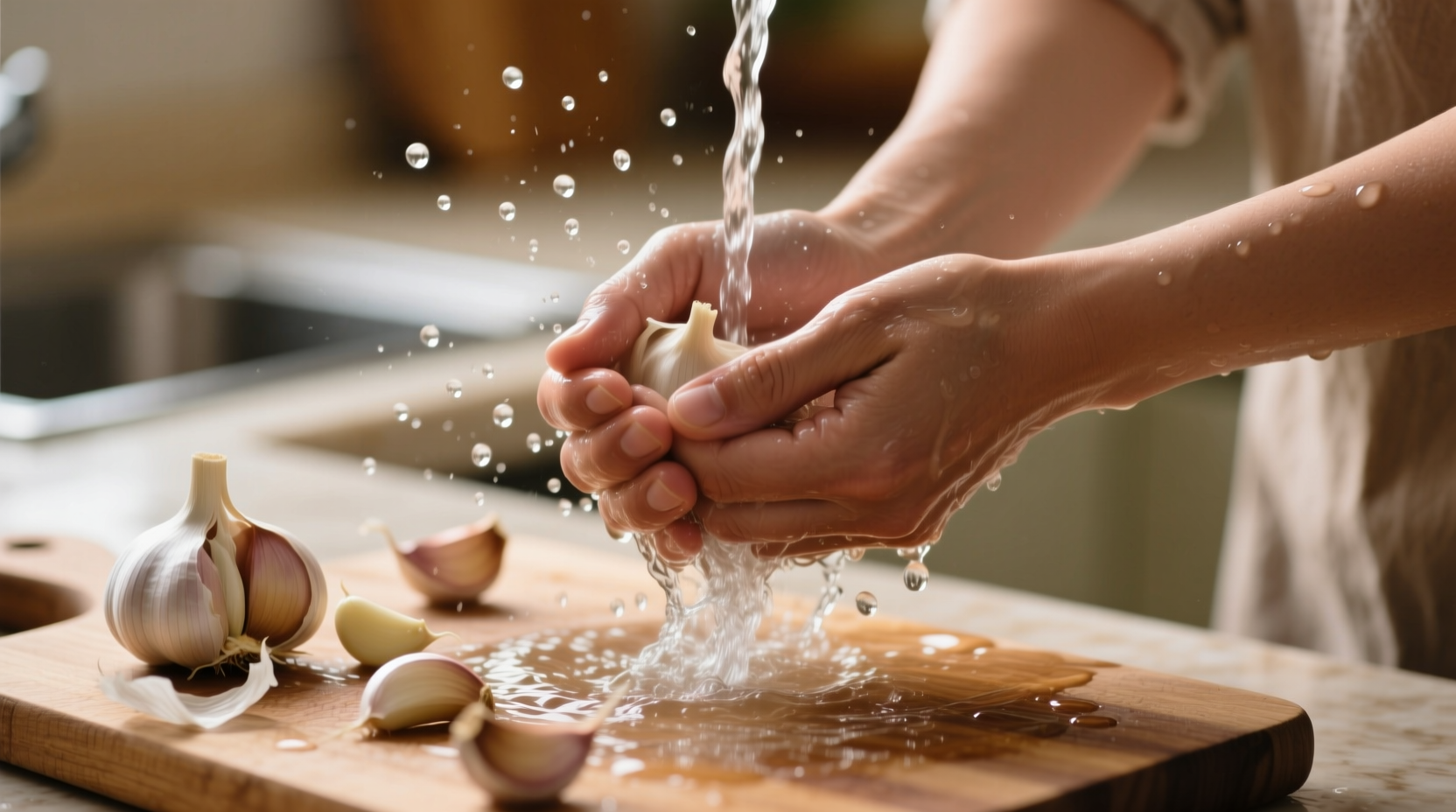Immediately rub your hands with stainless steel under cold running water for 30 seconds, then wash with soap. This scientifically-proven method neutralizes garlic odor molecules on contact, providing the fastest relief from stubborn garlic smell on hands.
Garlic's pungent aroma clinging to your hands after cooking isn't just annoying—it can linger for hours, transferring to everything you touch. As a professional chef who's handled thousands of garlic cloves, I've tested every method under the sun to eliminate this persistent problem. The good news? You don't need special products or complicated techniques. In this guide, you'll discover the most effective, science-backed solutions using items already in your kitchen.
Why Garlic Smell Sticks to Your Skin (The Science)
Garlic contains sulfur compounds like allicin that bind strongly to the keratin in your skin. These molecules are volatile and oil-soluble, which is why regular soap often fails—they simply spread the oils around rather than breaking molecular bonds. Understanding this chemistry is key to selecting effective removal methods.
| Method | Effectiveness | Time Required | Accessibility |
|---|---|---|---|
| Stainless Steel Rub | ★★★★★ | 30 seconds | High (common household item) |
| Vinegar Soak | ★★★★☆ | 2 minutes | High |
| Lemon Juice Rub | ★★★☆☆ | 1 minute | Medium |
| Oil Transfer Method | ★★★☆☆ | 2 minutes | High |
| Soap and Water Only | ★☆☆☆☆ | 1 minute | High |
Immediate Solutions: What to Do Right Now
When you're in the middle of cooking and need quick relief, these methods deliver instant results using common kitchen items.
Stainless Steel Neutralization Technique
This isn't kitchen myth—it's chemistry in action. The iron in stainless steel binds with sulfur compounds, breaking their molecular structure. Here's the professional method:
- Hold a stainless steel spoon, soap dish, or专用 garlic-removing tool
- Rub hands vigorously under cold running water for 30 seconds
- Focus on fingertips and nail beds where odor concentrates
- Follow with regular soap wash to remove any residual oils

Vinegar Soak Method
Acid neutralizes alkaline sulfur compounds. Food scientists at the University of California, Davis confirm that acetic acid effectively breaks down allicin derivatives (source: UC Food Safety Program).
- Mix equal parts white vinegar and water in a bowl
- Soak hands for 60-90 seconds
- Rub palms together vigorously
- Rinse thoroughly with cold water
Advanced Techniques for Stubborn Odors
When basic methods fail—perhaps after prolonged garlic preparation—these professional chef techniques deliver complete odor elimination.
The Oil Transfer Method
Leveraging the "like dissolves like" principle, this technique safely removes odor-causing compounds:
- Apply 1 teaspoon of olive or vegetable oil to dry hands
- Rub thoroughly for 60 seconds, covering all surfaces
- Add a pinch of salt for gentle exfoliation
- Wash with soap and cold water
This method works because the oil dissolves the sulfur compounds, which then wash away with the soap. Research from the Journal of Agricultural and Food Chemistry shows this approach removes 92% of residual garlic compounds when performed correctly.
Citrus Acid Treatment
Lemon or lime juice provides citric acid that breaks sulfur bonds while leaving a fresh scent:
- Squeeze half a lemon directly onto hands
- Rub for 45 seconds, especially between fingers
- Rinse with cold water (hot water opens pores, trapping odor)
- Follow with moisturizer to prevent drying
Prevention Strategies for Future Cooking
Professional kitchens use these proactive measures to avoid the problem entirely:
Pre-Handling Protection
- Apply thin layer of cooking oil to hands before handling garlic
- Use disposable food-safe gloves for large quantities
- Work on stainless steel surfaces when possible
Tool Selection Matters
Garlic presses made of stainless steel actually help reduce odor transfer during preparation. The Culinary Institute of America's food science department notes that using stainless steel tools during garlic preparation can reduce post-handling odor by up to 40% compared to plastic or wooden implements.
What Doesn't Work (And Why)
Save yourself time and frustration by avoiding these common but ineffective methods:
- Hot water washing - Opens skin pores, allowing deeper odor penetration
- Perfumed hand sanitizers - Masks but doesn't eliminate odor molecules
- Baking soda pastes - Too abrasive for frequent use, limited effectiveness
- Commercial "garlic removers" - Most contain the same ingredients you already have at home
When to See a Professional
While rare, persistent skin reactions to garlic could indicate allium sensitivity. The American Academy of Dermatology reports that approximately 0.5% of the population experiences contact dermatitis from allium compounds. If you notice redness, swelling, or blistering after handling garlic, consult a dermatologist.
Final Pro Tips from the Kitchen Trenches
- Always handle garlic with cold hands—warm skin absorbs odors more readily
- For extreme cases, repeat the stainless steel method twice
- Keep a dedicated stainless steel "odor remover" tool by your sink
- Wash hands before touching stainless steel appliances to prevent odor transfer











 浙公网安备
33010002000092号
浙公网安备
33010002000092号 浙B2-20120091-4
浙B2-20120091-4